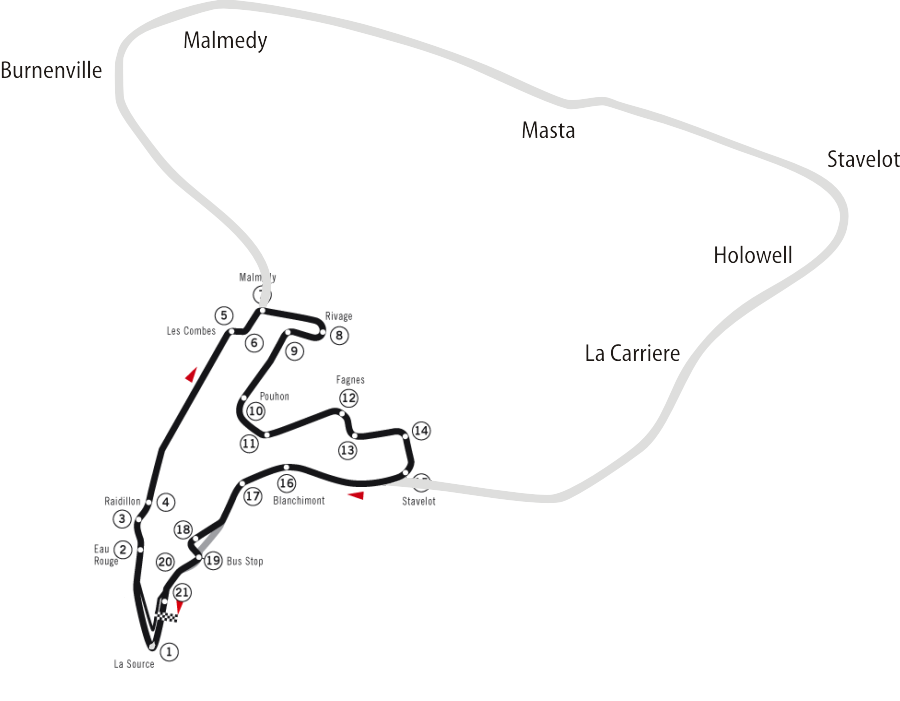The most technically advanced motor racing series in the world returns to action after its 4 week summer layoff for Round 11 at one of the classics of the calendar, Spa-Francorchamps. The Belgian Grand Prix at Spa dates back to the inception of F1 in 1950, although for several years in the 1970s and 80s the race was held primarily at the Zolder track, infamous for the death of Gilles Villeneuve during qualifying in 1982. But Spa has its own deadly history to be sure. Originally an open road circuit, Spa used to encompass a blistering 14k tour through several Ardennes villages and was considered, along with the original Nürbergring, the ultimate test of a driver’s skill, not only because of the high speeds but also the unpredictable weather. But as cars became faster and faster and particularly prior to the advent of downforce, the risk factor for such a long country road course with houses, ditches, telephone poles and trees only yards from the edge of the road became extremely perilous and fatalities and serious shunts piled up.
Eventually in 1983, after many years of disuse by F1, the Spa track was shortened to the 7k circuit we see today. Although most of the real life hazards have been removed, the circuit is still one of the fastest and is considered a supreme test of driver skill, as it always has been, particularly the narrow uphill charge out of Eau Rouge. When you see overtaking there, you know that a driver has nerves of steel because the consequence for failure can still be quite severe. Simply have a look at this terrible crash by a very fortunate Ricardo Zonta in 1999 to see what happens when things go awry at Spa:
http://www.youtube.com/watch?v=wWFZWpbjO44
You can see the practice times for the first two Friday sessions at Spa at FormulaOne.com.

